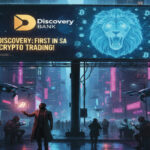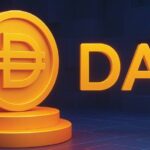When I first dipped my toes into the world of cryptocurrency, I was fascinated by the idea of digital money, but what truly captivated me were projects that moved beyond simple payments to solve real-world problems. The Render Network (RNDR) is a prime example of such innovation. It’s not just a token; it’s a decentralized platform poised to revolutionize the way we create and experience digital content, especially as the metaverse, virtual reality, and AI continue to evolve.
Imagine a world where creating stunning 3D graphics, visual effects for movies, or even training complex AI models requires immense computing power – power that can be incredibly expensive and time-consuming to access. Render Network steps in to solve this. It connects creators who need this computational muscle with individuals and organizations who have idle Graphics Processing Units (GPUs) – the specialized hardware essential for these tasks. In return for contributing their unused power, these “node operators” earn Render tokens (RNDR).
This article will serve as your comprehensive guide to Render (RNDR) for beginners. We’ll demystify core crypto concepts, delve into Render Network’s fascinating history and the vision of its founders, explore its crucial “use cases” in today’s rapidly advancing digital landscape, and discuss its future prospects. Crucially, we’ll also address common misconceptions about cryptocurrencies, ensuring you have a clear, accurate, and trustworthy understanding of this transformative project.
Your Crypto Compass: Navigating the Core Concepts
To truly appreciate Render Network’s mission, it’s essential to grasp the fundamental concepts that underpin the broader cryptocurrency and blockchain landscape.
- Cryptocurrency: At its core, cryptocurrency is digital money secured by complex encryption techniques (cryptography). Unlike traditional government-issued money (fiat currency), cryptocurrencies operate on a decentralized network. This means no single central authority, like a bank or government, controls them. Instead, transactions are verified and recorded by participants across the network, aiming for transparency and security. RNDR is a specific type of cryptocurrency, a utility token, designed to facilitate transactions within the Render Network.
- Blockchain: Imagine a continuously growing, digital ledger distributed across thousands of computers worldwide. Every transaction or piece of data is grouped into a “block,” and once a block is completed, it’s cryptographically linked to the previous one, forming an unbroken “chain.” This innovative structure ensures transparency, security, and immutability – once data is recorded on the blockchain, it’s nearly impossible to alter or remove.
- Ethereum and Solana Blockchains: Initially, the Render Network and its RNDR token were built on the Ethereum blockchain. Ethereum is known for its robust smart contract capabilities, allowing for complex decentralized applications. However, to improve scalability and reduce transaction costs, the Render Network began migrating to the Solana blockchain in 2023. Solana is renowned for its high transaction speeds and low fees, making it an ideal choice for a network requiring rapid data processing and numerous micro-transactions. This migration offers significant benefits for both creators and node operators on the network.
- Decentralization: This is the foundational philosophy of blockchain technology. It means power and control are distributed among many participants on a network, rather than being held by a single, central entity (like a large cloud rendering farm, corporation, or government). This distribution makes the network more resilient to censorship, manipulation, and single points of failure. In Render’s case, decentralization means democratizing access to powerful GPU resources, moving away from centralized service providers.
- Consensus Mechanisms (Simplified): How do all these distributed computers agree on the correct order of transactions and validate tasks in a decentralized network? This is handled by a “consensus mechanism.”
- Proof-of-Render (PoR): Render Network utilizes a unique consensus mechanism called Proof-of-Render (PoR). While it shares some conceptual similarities with Proof-of-Work (PoW, like Bitcoin), instead of solving arbitrary mathematical puzzles, node operators on Render perform actual GPU rendering jobs. Their computational “work” is directly tied to the rendering tasks requested by creators. The network verifies that the rendering work has been completed correctly before payments are released, ensuring accountability and preventing fraudulent activity. This system guarantees that the “proof” of work is the rendered image or animation itself.
The Genesis of Render: Revolutionizing Creative Production
The story of the Render Network begins long before the term “metaverse” became commonplace, stemming from a vision to democratize access to high-end graphics processing.
The Origins (2009 Concept, 2017 Launch): From Cloud Graphics to Blockchain
The Render Network was first conceived in 2009 by Jules Urbach, the CEO of OTOY Inc., a leading cloud graphics company. Urbach’s work at OTOY involved pushing the boundaries of 3D rendering and cloud computing for major film studios, game developers, and virtual reality pioneers. He recognized early on the immense and growing demand for GPU computing power for these tasks, and the inherent inefficiencies and high costs associated with traditional, centralized rendering farms.
The idea was simple yet revolutionary: what if idle GPUs around the world – from personal computers to data centers – could be harnessed and collectively pooled to create a distributed rendering network? This vision, to leverage unused computing power for mutual benefit, was a natural fit for blockchain technology, which began to mature around the same time.
The Render Network officially launched in 2017, building upon OTOY’s established expertise in GPU rendering technology (specifically, their OctaneRender software). The public token sale for RNDR took place in October 2017, followed by a private sale from January to May 2018. During this period, early adopters and artists participated in the RNDR Beta Testnet, helping to refine and build the platform before its full public release in April 2020.
Founders: Jules Urbach and the OTOY Team
The driving force behind the Render Network is Jules Urbach, its founder and CEO. Urbach is widely recognized as a visionary and leader in computer graphics, streaming, 3D rendering, and cloud computing. He holds over 70 patents and possesses more than 25 years of industry experience. His long-standing commitment to pushing graphical boundaries and his deep understanding of the computing needs of creative industries provided the foundational expertise for Render Network.
The Render Network team operates globally, with its core operations backed by OTOY Inc. The project has also assembled a world-class advisory board featuring influential figures from the entertainment and technology sectors, including:
- Ari Emanuel: Co-Founder and Co-CEO of Endeavor (parent company of WME), a global entertainment and media agency.
- J.J. Abrams: Renowned film director, producer, and screenwriter (known for Star Wars, Star Trek, Lost).
- Mike Winkelmann (Beeple): One of the most famous digital artists and pioneers in the NFT space.
- Brendan Eich: Founder and CEO of Brave Software (Brave browser) and BAT (Basic Attention Token), a key figure in Web3.
This impressive advisory board underscores Render Network’s ambition to bridge the gap between cutting-edge blockchain-based computing solutions and mainstream creative industries. They aim to leverage their connections and expertise to drive adoption and integrate Render’s technology into various sectors, from film and gaming to AI and the metaverse.
Key Historical Milestones:
- 2009: Jules Urbach conceives the idea for a decentralized GPU rendering network.
- 2017 (October): Render Network officially launches; public token sale for RNDR (ERC-20 token on Ethereum).
- 2018 (Jan-May): Private token sale and RNDR Beta Testnet period.
- 2020 (April 27): Full public release of the Render Network.
- 2023: Introduction of the Burn-and-Mint Equilibrium (BME) tokenomics model to align incentives and manage supply.
- 2023-Present: Ongoing migration of the Render Network to the Solana blockchain to enhance scalability and reduce costs.
- 22nd May, 2025: Nvidia CEO Jensen Huang highlights the surging demand for GPUs and the potential for decentralized GPU networks, implicitly validating the Render Network’s mission.
- March 2025: Hosted first native Render Network event, RenderCon.
- April 2025: Partnered with Manifest Network for enterprise solutions.
- May 2025: Automated high-fidelity rendering using Render Network API.
The history of Render Network is one of continuous innovation and adaptation, evolving from a foundational idea to a robust platform addressing the ever-increasing demand for high-performance computing in the digital creative space.
Render Network (RNDR) in Action: Real-World Applications and Benefits
Render Network isn’t just about facilitating transactions; it’s about solving a critical, computationally intensive problem in the digital world: 3D rendering, visual effects, and other GPU-heavy tasks. Its real-world applications are vast and directly address the needs of creators and developers in rapidly growing industries.
1. Democratizing Access to GPU Power for Creators
- The Problem: High-quality 3D rendering and complex visual effects require powerful and expensive Graphics Processing Units (GPUs). Acquiring and maintaining these resources can be prohibitive for individual artists, small studios, or even large companies facing peak demands. Traditional cloud rendering services are often centralized, costly, and can have long wait times.
- Render’s Solution: The Render Network creates a decentralized marketplace. Creators (artists, animators, game developers, architects) can submit their rendering jobs to the network and pay for the computing power they need using RNDR tokens.
- Benefits:
- Cost-Efficiency: By tapping into a global pool of idle GPUs, Render can offer rendering services at a potentially lower cost than traditional centralized solutions, making high-quality rendering more accessible.
- Speed and Scalability: The distributed nature of the network means that rendering jobs can be processed much faster by leveraging numerous GPUs simultaneously, significantly reducing render times. The network can scale up or down dynamically based on demand.
- Accessibility: Even creators with limited hardware can access the immense computing power of the network, enabling them to produce professional-grade visuals.
- Flexibility: Creators can monitor render progress in real-time and approve deliverables before payment is released, ensuring quality control.
2. Monetizing Idle GPU Resources for Node Operators
- The Opportunity: Millions of GPUs around the world sit idle for significant periods, whether in gaming PCs, workstations, or even data centers.
- Render’s Solution: Individuals and organizations with unused GPU power can become “Node Operators” on the Render Network. They connect their GPUs to the network and process rendering jobs submitted by creators.
- Benefits:
- Passive Income: Node operators earn RNDR tokens for contributing their spare GPU computing power, providing a way to monetize otherwise idle hardware.
- Efficient Resource Utilization: It promotes the efficient use of global GPU resources, reducing waste and maximizing hardware utility.
- Decentralized Contribution: Anyone with a compatible GPU and an internet connection can participate, fostering a truly global and decentralized network of computing power.
3. Powering the Metaverse and Web3 Visuals
- The Need: The burgeoning metaverse, virtual reality (VR), augmented reality (AR), and sophisticated Web3 applications demand incredibly high-fidelity, real-time 3D graphics and complex simulations. This requires immense rendering capabilities.
- Render’s Role: Render Network is a foundational infrastructure layer for these next-generation digital experiences. It provides the on-demand, scalable GPU power necessary to create and stream immersive 3D environments, realistic avatars, and interactive digital assets.
- Benefits:
- Enabling New Experiences: By democratizing high-end rendering, Render accelerates the development of more visually stunning and complex metaverse environments, VR applications, and sophisticated NFTs (which often involve complex 3D models).
- Scalable Infrastructure: As demand for metaverse content grows, Render’s distributed network can scale to meet the computational needs.
4. Supporting Artificial Intelligence (AI) and Machine Learning (ML)
- The Demand: Training advanced AI models, especially large language models (LLMs) and complex neural networks, requires massive amounts of GPU compute power. This demand is skyrocketing.
- Render’s Potential: While initially focused on graphics rendering, the underlying GPU power offered by the Render Network is inherently versatile. It can be utilized for various compute-intensive tasks, including AI model training, scientific simulations, and machine learning inferences.
- Benefits:
- AI Democratization: Render could potentially offer a more accessible and cost-effective alternative to centralized cloud providers for AI development and research, empowering more innovators.
- Expanding Use Cases: As the network matures, its utility can expand beyond traditional rendering to support the growing needs of the AI industry.
5. Robust Tokenomics and Governance
- RNDR Token (Utility & Governance): The RNDR token serves as the primary utility token within the network. Creators use RNDR to pay for rendering jobs, and Node Operators earn RNDR for their services. Additionally, RNDR holders can participate in the network’s decentralized governance (DAO), voting on important proposals that shape its future.
- Burn-and-Mint Equilibrium (BME): Introduced in 2023, the BME mechanism aims to balance token supply and demand. When a creator submits a job, RNDR tokens equivalent to the job’s fiat cost are “burned” (removed from circulation), creating deflationary pressure. Simultaneously, new RNDR tokens are “minted” (emitted) to pay node operators for their completed work. This innovative system aims to ensure predictable costs for creators while providing consistent earnings for operators, aligning incentives across the network.
- RNDR Credits: To simplify access for mainstream users not familiar with crypto, Render Network allows creators to purchase rendering power using traditional payment methods like PayPal and Stripe. These “RNDR Credits” are non-exchangeable and are used internally to facilitate the underlying RNDR transactions, effectively abstracting away the crypto complexity for the end-user.
- Expertise Insight: “Render Network is a fantastic example of a project using blockchain not just for finance, but for resource sharing. The demand for GPU power is only going to explode with the growth of AI and immersive digital worlds. Render’s decentralized approach offers a compelling alternative to traditional, centralized cloud computing, making high-end graphics and AI capabilities accessible to a much broader audience.”
Dispelling the Myths: Addressing Common Crypto Misconceptions (and Render’s Context)
The rapid evolution of cryptocurrencies has brought with it a host of myths and misunderstandings. Let’s tackle some common misconceptions, especially as they relate to a utility token like RNDR and the Render Network.
- “Cryptocurrency is only for criminals and illicit activities.”
- Reality: While early forms of digital cash were sometimes exploited for illicit purposes, the vast majority of cryptocurrency transactions today are legitimate. Furthermore, public blockchains like Ethereum and Solana, on which RNDR operates, are inherently transparent. Every transaction is recorded on a publicly accessible and immutable ledger. This makes blockchain data highly traceable, often more so than traditional cash transactions. Law enforcement agencies globally are increasingly sophisticated at utilizing blockchain analytics tools to track digital assets.
- Context for Render: Render Network operates on public blockchains, meaning all transactions for rendering jobs are recorded and transparent. The network’s Proof-of-Render mechanism and escrow system ensure verifiable work and payment, which actually reduces opportunities for fraud or illicit activities within the rendering process itself. Render’s focus is on providing a legitimate service for artists and creators.
- Trustworthiness Principle: “Just as traditional fiat currencies can be misused, so too can digital assets. However, the transparent and immutable nature of public blockchains means that criminal activity on them is often more traceable than in traditional financial systems. We believe in providing transparent education to demonstrate how the vast majority of cryptocurrencies, including those powering innovative platforms like Render, are part of a legitimate and evolving digital economy.”
- “Crypto is a scam/Ponzi scheme.”
- Reality: Unfortunately, the crypto space has seen its share of fraudulent projects, including “rug pulls” (where creators abandon a project and disappear with investors’ funds) and outright scams. However, legitimate blockchain technology offers genuine innovation. A key distinction is whether a project offers genuine technological utility, a sustainable economic model, and real-world applications, or if it simply relies on attracting new investors to pay off earlier ones.
- Context for Render: Render Network is a legitimate project with a clear use case: decentralized GPU rendering. It has a reputable founder (Jules Urbach, CEO of OTOY) with a long track record in the computer graphics industry, a prominent advisory board, and a functional product that has been used by creators. Its tokenomics (the Burn-and-Mint Equilibrium) are designed to create a sustainable economic model tied to actual network usage, rather than simply relying on new investors to pay old ones. While RNDR’s price can be volatile (like any cryptocurrency), the project provides a tangible service and has a transparent development roadmap, clearly distinguishing it from a scam or Ponzi scheme.
- Authoritativeness Tip: “When evaluating any crypto project, look beyond promises of guaranteed returns. Does it have a real product or service? Is there a credible team behind it? Is its code open-source? For a project like Render, its long history, reputable team, and active development of a solution to a real-world problem (GPU rendering) demonstrate its legitimacy and fundamental value proposition.”
- “Crypto is bad for the environment.”
- Reality: This misconception primarily stems from the energy consumption of “Proof-of-Work” (PoW) cryptocurrencies like early Bitcoin, which require vast computational power for mining. However, the blockchain industry is rapidly evolving towards more energy-efficient solutions.
- Context for Render: While Render initially operated on Ethereum (which was PoW at the time), it has been migrating to the Solana blockchain, which uses a Proof-of-Stake (PoS) consensus mechanism. PoS is significantly more energy-efficient than PoW because it doesn’t involve competitive mining. Instead, validators are chosen to create new blocks based on how much cryptocurrency they “stake” (lock up). Therefore, the environmental impact of transacting with or utilizing RNDR on the Solana chain is minimal. Furthermore, Render Network’s core mission is to efficiently utilize existing idle GPU power, rather than solely creating new energy demands, which can be seen as a form of resource optimization.
- Experience Insight: “When I first encountered crypto, the energy consumption headlines were a major concern. It’s important to differentiate between various blockchain technologies. Projects like Render, by migrating to platforms like Solana and focusing on utilizing existing idle hardware, are actively moving towards more environmentally sustainable models, so the blanket statement ‘crypto is bad for the environment’ isn’t accurate across the board.”
- “Crypto will replace all traditional money.”
- Reality: While cryptocurrencies and blockchain offer groundbreaking tools for digital value transfer and programmable money, it’s highly improbable that they will entirely replace fiat currencies (like the Indian Rupee or the U.S. Dollar) and the global financial system in the foreseeable future. Traditional systems are deeply entrenched and serve numerous, complex functions that go beyond simple transactions.
- Context for Render: RNDR is a utility token, not primarily designed to be a replacement for traditional money for everyday purchases. Its purpose is to facilitate a specific service: decentralized GPU rendering. While it has monetary value and can be traded, its core function is to be the medium of exchange within the Render Network. The inclusion of “RNDR Credits” (allowing fiat payments) even shows a pragmatic approach to integrate with traditional financial systems, rather than attempting to replace them entirely. It enhances existing creative workflows, offering a new payment rail and resource model, not a new global currency.
- Trustworthiness Principle: “The true potential of blockchain lies in its ability to enhance existing systems and create new ones, not necessarily to dismantle everything that came before. Projects like Render highlight how new forms of digital assets can emerge to solve specific industry problems, operating alongside traditional financial instruments, serving different purposes for different users.”
By directly addressing these common misconceptions, we aim to provide a more accurate and nuanced understanding of the cryptocurrency landscape, enabling beginners to appreciate the legitimate contributions and transformative potential of projects like Render Network.
Diving In: A Beginner’s Perspective on Acquiring & Storing RNDR
If the innovative approach of the Render Network and its RNDR token has captured your interest, you might be wondering how one acquires and manages such a digital asset. The process is generally straightforward for beginners, but it’s crucial to proceed with caution, especially given the inherent volatility of the crypto market. This information is purely for educational purposes – it is not financial advice. Always remember that security is paramount in the crypto world.
1. Understanding What You’ll Need
- A Centralized Cryptocurrency Exchange (CEX): This is the most common and easiest entry point for beginners to convert your local fiat currency (like Indian Rupees) into cryptocurrencies. Many major global exchanges list RNDR due to its popularity.
- Popular Exchanges that list RNDR: Examples include Binance, Coinbase, Kraken, KuCoin, Gate.io, MEXC Global, Bybit, and others. Always check an exchange’s specific listings and supported fiat deposit methods for your region. For users in India, platforms that facilitate INR deposits (e.g., via UPI or bank transfer) will allow you to buy a widely traded cryptocurrency (like USDT or SOL) which you can then trade for RNDR.
- A Compatible Self-Custodial Wallet (Ethereum or Solana): For true ownership and control over your RNDR tokens, a self-custodial (or non-custodial) wallet is essential. This means you (and only you) control the private keys or seed phrase to your funds. Since RNDR exists on both Ethereum and Solana (due to the ongoing migration), you’ll need a wallet that supports the specific network you are using for your RNDR tokens.
- Ethereum-compatible wallets: MetaMask is the most popular browser extension wallet for Ethereum and ERC-20 tokens.
- Solana-compatible wallets: Phantom Wallet and Solflare are popular choices for Solana and SPL tokens.
- Hardware Wallets (Cold Storage): For larger amounts of RNDR, a hardware wallet provides the highest level of security by storing your private keys offline. Ledger and Trezor are widely supported hardware wallets that can securely store both ERC-20 (Ethereum) and SPL (Solana) tokens, including RNDR. This is highly recommended for long-term storage.
2. Acquiring RNDR
If you’re starting from scratch (with fiat currency like INR), you’ll generally follow these steps:
- A. Set up an Account on a Centralized Exchange (CEX – e.g., Binance, KuCoin, Gate.io):
- Sign Up and Complete KYC (Know Your Customer): All regulated CEXs require identity verification (uploading ID, proof of address) to comply with anti-money laundering (AML) laws. This is a standard and necessary step for your security and compliance.
- Deposit Fiat Currency or another Cryptocurrency: Use methods available in your region (e.g., UPI, bank transfer, P2P trading) to deposit INR into your chosen exchange account. Alternatively, if you already own other cryptocurrencies like Bitcoin (BTC) or Ethereum (ETH), you can deposit them.
- Buy RNDR: Navigate to the trading section of the exchange. You will likely need to trade your deposited fiat or crypto for a widely accepted stablecoin like USDT or for ETH/SOL, and then trade that stablecoin/ETH/SOL for RNDR. Look for trading pairs like RNDR/USDT, RNDR/ETH, or RNDR/SOL.
- B. Transfer RNDR to Your Self-Custodial Wallet (Highly Recommended for Control):
- Get Your Wallet Address: Open your chosen self-custodial wallet (e.g., MetaMask for Ethereum, Phantom for Solana). Copy your public wallet address for the correct network (Ethereum or Solana, depending on where your RNDR is). It is critical to know which network your RNDR is on.
- Initiate Withdrawal from CEX: On the centralized exchange, go to your “Withdraw” section. Select RNDR as the cryptocurrency you want to send.
- Paste Wallet Address and Select Network: Paste your copied wallet address. Crucially, select the “ERC-20” (for Ethereum) or “SOL” / “Solana Network” (for Solana) as the transfer network. Always double-check the address AND the network! Sending RNDR to an incorrect network (e.g., sending ERC-20 RNDR to a Solana address, or vice versa) will result in permanent loss of funds.
- Confirm: Review all details carefully (address, amount, network, fees) and confirm the withdrawal. It may take a few moments for the RNDR tokens to appear in your self-custodial wallet.
3. Storing Your RNDR
- On a Centralized Exchange: This is convenient for immediate trading. However, the exchange holds your private keys, meaning you don’t have full control over your funds. You are trusting the exchange with your assets, making them potentially vulnerable to hacks or insolvency. Not recommended for significant amounts or long-term holding.
- In a Self-Custodial Wallet (Recommended): This gives you full control and is the recommended approach for any significant amount of crypto. You are solely responsible for safeguarding your seed phrase (a series of 12 or 24 words that is your wallet’s master key). Never share your seed phrase with anyone, and store it securely offline in multiple, separate locations. Losing it means losing your crypto.
- Software Wallets (e.g., MetaMask, Phantom): Connected to the internet. Convenient for interacting with dApps and managing your assets.
- Hardware Wallets (Cold Storage): Physical devices that store your private keys offline. Considered the most secure option for large amounts of crypto. Ideal for long-term storage.
4. “Using” Your RNDR
Once you have RNDR in your self-custodial wallet, your primary “use” cases will be:
- Paying for Rendering Jobs (as a Creator): If you are a 3D artist or studio, you can use your RNDR to pay for rendering services on the Render Network.
- Earning by Providing GPU Power (as a Node Operator): If you have an idle GPU, you can connect it to the Render Network and earn RNDR by completing rendering jobs.
- Participating in Governance: RNDR holders can participate in the decentralized autonomous organization (DAO) that governs the Render Network, voting on proposals and shaping its future development.
- Holding as a Speculative Asset: Many simply hold RNDR in anticipation of price appreciation, driven by the network’s growth and increasing demand for decentralized GPU computing.
- Trading RNDR: Buy and sell RNDR for other cryptocurrencies on centralized or decentralized exchanges.
An Essential Disclaimer on Risk and Volatility: The cryptocurrency market, especially projects in emerging technological fields like decentralized GPU networks, is highly volatile and speculative. Investing in cryptocurrencies like RNDR involves extraordinary risks, including the risk of losing your entire investment. The price of RNDR can fluctuate dramatically and rapidly, often driven by network adoption, development progress, market sentiment, and broader crypto trends. This guide is for informational purposes only and does not constitute financial advice. Always remember that the current date is July 8, 2025. Conduct thorough research, understand the significant risks involved, and consider your financial situation before making any investment decisions. Never invest more than you can afford to lose.
The Road Ahead: The Future of Render Network (RNDR)
The future of the Render Network is deeply intertwined with the evolving landscape of 3D content creation, the metaverse, artificial intelligence, and the broader decentralized computing space. Its success hinges on its ability to scale, attract more users (both creators and node operators), and maintain its technological edge.
1. Scaling and Network Adoption
- Solana Migration: The ongoing migration to the Solana blockchain is a crucial step for scalability and reducing transaction costs. Successful completion and optimization of this migration will be vital for supporting high volumes of rendering jobs and attracting more users.
- Node Operator Growth: The network’s power directly correlates with the number and quality of active GPU nodes. Continued incentives and a streamlined process for new node operators will be essential for sustained growth.
- Creator Onboarding: Simplifying the process for creators, including further development of the RNDR Credits system (fiat payments), will be key to attracting mainstream artists and studios who may not be familiar with cryptocurrencies.
2. Expanding Use Cases Beyond Traditional Rendering
- AI and Machine Learning: As the demand for GPU power in AI training and inference skyrockets, Render Network has a massive opportunity to expand its services beyond traditional 3D rendering. Its decentralized compute could become a vital resource for AI startups, researchers, and even large enterprises looking for cost-effective and scalable GPU access. The Nvidia CEO’s recent comments on GPU demand implicitly validate this potential.
- Metaverse and Real-Time Graphics: The growth of immersive metaverse environments and real-time 3D applications will drive immense demand for on-demand rendering. Render Network is well-positioned to be a foundational infrastructure provider for these nascent industries.
- Scientific Research and Simulation: GPU computing is crucial for various scientific simulations. Render Network could potentially cater to these niche but computationally intensive demands.
3. Technological Advancements and Ecosystem Development
- Proof-of-Render Evolution: Continued refinement of the Proof-of-Render consensus mechanism to ensure efficiency, security, and fairness for both creators and node operators.
- Software Integrations: Deeper integrations with popular 3D software (like Blender, Cinema 4D, Unreal Engine, Unity) and AI frameworks will make it easier for creators and developers to leverage the Render Network directly from their existing workflows.
- Decentralized AI Networks (DePIN): Render Network is a key player in the nascent “Decentralized Physical Infrastructure Networks” (DePIN) sector, which aims to decentralize physical infrastructure using blockchain incentives. As DePIN gains traction, Render could see increased synergy and adoption.
4. Competitive Landscape and Market Position
- Competition: Render Network faces competition from both traditional centralized cloud rendering services and other decentralized compute projects (e.g., Livepeer for video transcoding, Akash Network for generalized cloud compute). Its ability to maintain its niche expertise in GPU rendering while expanding to AI will be crucial.
- Strategic Partnerships: Collaborations with major studios, game developers, AI companies, and hardware manufacturers will be vital for widespread adoption and industry integration. The advisory board’s connections are a significant asset here.
5. Regulatory Environment
- Clear Classification: Continued clarity from regulatory bodies regarding the classification of utility tokens and decentralized computing networks will be beneficial for Render’s long-term stability and institutional adoption.
- Ethical Considerations of AI: As AI becomes more powerful, the ethical implications of decentralized AI model training (potentially on Render’s network) might come under scrutiny, necessitating responsible development and governance.
In conclusion, the Render Network holds immense potential to disrupt the traditional GPU rendering and cloud computing industries. Its focus on decentralization, combined with a strong team and a clear utility, positions it as a significant player in the future of digital content creation, the metaverse, and AI. However, like all ambitious projects, its success will depend on its ability to execute its vision, adapt to market changes, and navigate the evolving technological and regulatory landscape. For beginners, RNDR offers a compelling case study of how blockchain technology is moving beyond finance to power the next generation of digital innovation.















